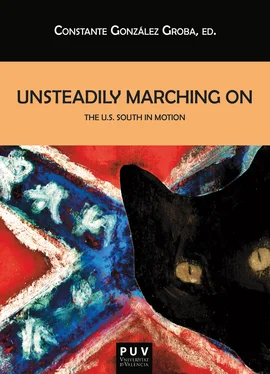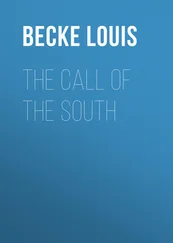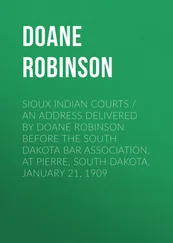Gray, Richard. After the Fall: American Literature Since 9/11 . Oxford: Wiley-Blackwell, 2011.
Hannah, Barry. “Sick Soldier at Your Door.” Harper’s (June 2009): 27-31.
Hobson, Fred. The Southern Writer in the Postmodern World . Athens: The U of Georgia P, 1991.
Hooper, Brad. “The Good Priest’s Son.” Booklist (April 15, 2005): 1414.
Karl, Frederick R. William Faulkner: American Writer: A Biography . 1989. New York: Ballantine, 1990.
McCarthy, Cormac. The Road . New York. Alfred A. Knopf, 2006.
McCrum, Robert. “The Need for Novelists.” The Observer (September 23, 2001): 18.
McInerney, Jay. The Good Life . New York: Alfred A. Knopf, 2006.
McPherson, Tara. Reconstructing Dixie: Race, Gender, and Nostalgia in the Imagined South.
Durham, NC: Duke UP, 2003.
Melnick, Jeffrey. 9/11 Culture: America under Construction . Oxford: Wiley-Blackwell, 2009.
O’Donnell, Victoria. “Mammy.” The New Encyclopedia of Southern Culture: Vol. 4: Myth, Manners, & Memory . Ed. Charles Reagan Wilson. Chapel Hill: U of North Carolina P, 2006. 243-44.
Préher, Gérald. “Resisting History or How to Turn 9/11 into Southern History: Reynolds Price’s The Good Priest’s Son .” Le travail de la résistance dans les sociétés, les littératures et les arts en Amérique du Nord . Ed. Yves-Charles Grandjeat. MSHA, 2008. 165-184.
Price, Reynolds. The Good Priest’s Son . New York: Scribner, 2005.
Rosaldo, Renato, Culture and Truth: The Remaking of Social Analysis . 1989. London: Routledge, 1993.
Shearer, Cynthia. The Celestial Jukebox . Washington, DC: Shoemaker Hoard, 2005.
Slocum, Fred. “Militarism, Southern Culture, the 9/11 Attacks and the Bush Administration’s Responses: The Implications for Contemporary Southern Politics.” Paper presented at the Southern Political Science Association conference, New Orleans, January 4-7, 2007.
II
ON THE ROAD AGAIN
WITH CORMAC McCARTHY
Cormac McCarthy and the Craftsman Hero
Robert H. Brinkmeyer, Jr.
In Cormac McCarthy’s The Stonemason , the stonemason apprentice Ben tells his wife Maven that “you cant separate wisdom from the common experience and the common experience is just what the worker has in great plenty.” When Maven asks why, then, more workers aren’t wise, Ben answers: “I guess for the same reason that more college professors arent wise. Thinking’s rare among all classes. But a laborer who thinks, well, his thought seems more likely to be tempered with humanity. He’s more inclined to tolerance. He knows that what is valuable in life is life.” College professors, he adds, are “more apt to just be dangerous. Marx never worked a day in his life” (38).
Ben’s words here point to a central idea running through much of McCarthy’s work: that to engage in meaningful work, what I am designating as craft (following Edward-Lucie Smith’s definition that craft is a calling demanding special skill and knowledge), involves the simultaneous engagement of thinking and making, a conjoining of mind and body, of head and hand. Unlike Hannah Arendt, who argues that intellectual engagement comes only after manual labor is completed, McCarthy suggests that, in the words of Richard Sennett, “every good craftsman conducts a dialogue between concrete practices and thinking; this dialogue evolves into sustaining habits, and these habits establish a rhythm between problem solving and problem finding” (9).
Craftsmanship in McCarthy’s world also suggests groundedness, being rooted in a particular place and living by a daily rhythm, even if the demands of work sometimes mean journeying away from home—being, literally, a journeyman. As Ben, returning to The Stonemason , underscores, the life of a journeyman is not one of ceaseless movement and continuous adaptation, but rather a life in which one never travels far, either from home or from one’s daily rhythms. The word journeyman, Ben notes, “comes from the word for day, and a journey was originally a day’s travel” (96); and he adds that the primary rule of the journeyman is always to quit at quitting time, to put in a day’s work, nothing more, nothing less. “In the concept of a day’s work is rhythm and pace and wholeness,” Ben says. “And truth and justice and peace of mind” (96).
As Ben’s words here suggest, the rituals of work and craft are as much about constructing the craftsman’s life (and more generally, his or her social world) as they are about constructing an artifact; and in fact, both are integrally connected, the structure of one process mirroring the other. In fact, in McCarthy’s world, craftsmanship does not necessarily involve literally creating an artifact. Craftsmen are simply those who do the best job they can, devoted to the demands and rituals of their professions. In a world otherwise given to violence and mayhem, craftsmen embody, returning to Ben’s words, “truth and justice and peace of mind.”
Two of McCarthy’s craftsmen who perform tasks rather than create artifacts are the doctor who tends to Boyd Parham in The Crossing and the judge who hears the case against John Grady Cole near the end of All the Pretty Horses . The doctor’s professionalism, his commitment to his craft, is everywhere apparent: he voices no complaint at being awoken in the night to tend to a stranger who lies far away; he accepts no compensation for his services; he works meticulously and masterfully on the gravely-injured Boyd. McCarthy’s exacting description of the doctor’s work—the scene stretches for over 10 pages—underscores not only the doctor’s skill but also the moral dimension of that skill, the humanity of the doctor and the humaneness of his work. When the doctor begins examining Boyd, the light from a lamp is reflected in his eyeglasses, “very small, very steadfast. Like the light of holy inquiry burning in his aging eyes” (306).
If less exactingly described than the doctor’s, the judge’s professional craftsmanship is nonetheless just as noteworthy. Not only does the judge skillfully oversee the wrongful case brought against John Grady, but he also later (in another late-night visitation, John Grady showing up at the judge’s door) patiently listens to and wisely counsels John Grady on his lingering guilt about his killing of an assailant in the Mexican penitentiary. The judge drives home the simple point that sometimes a person has no choice in what he does—John Grady would have been killed if he hadn’t fought back—and he suggests that he himself had had no choice in becoming a judge. “I didnt want to be a judge,” he says, and goes on to explain: “I just saw a lot of injustice in the court system and I saw people my own age in positions of authority that I had grown up with and knew for a calcified fact didnt have one damn lick of sense. I think I just didnt have any choice” (292). Despite being haunted by the execution of a man he had sentenced (his guilt paralleling John Grady’s), the judge has remained steadfastly committed to his calling.
In their committed, meaningful lives, the doctor and the judge stand as models for the two young drifters, Billy and John Grady. Both Billy and John Grady share much with their guiding figures, as both young men are themselves as skilled (or at least have the potential to be as skilled) in their craft as the older men. Billy’s tracking and trapping of the wolf, described in detail as exacting as that of the doctor’s operations, together with his later intimate connection with the captured wolf, suggest his rigorous habits of work, together with his fundamental goodness. John Grady, as a horseman, appears even more skilled. His knowledge of and expertise with horses derive from both long hours of training and a profound connection with them. Early in All the Pretty Horses , John Grady is described sitting on “a horse not only as if had he’d been born to it which he was but as if were he begot by malice or mischance into some queer land where horses never were he would have found them anyway. Would have known that there was something missing for the world to be right or he right in it and would have set forth to wander wherever it was needed for as long as it took until he came upon one and he would have known that that was what he sought and it would have been” (23). John Grady repeatedly exhibits his great skill with horses, most impressively when he breaks the wild horses at the hacienda, described in another of McCarthy’s extended celebratory passages on the beauty of masterful work.
Читать дальше












